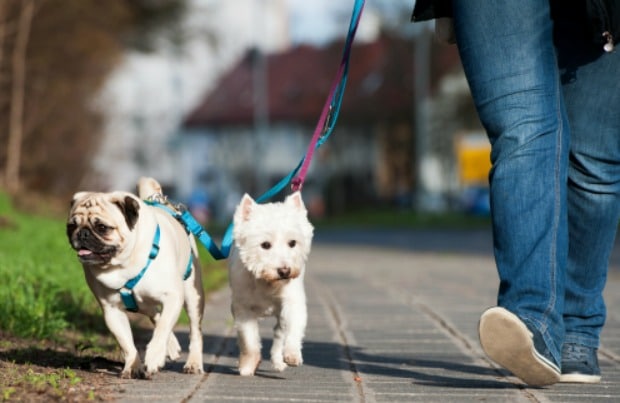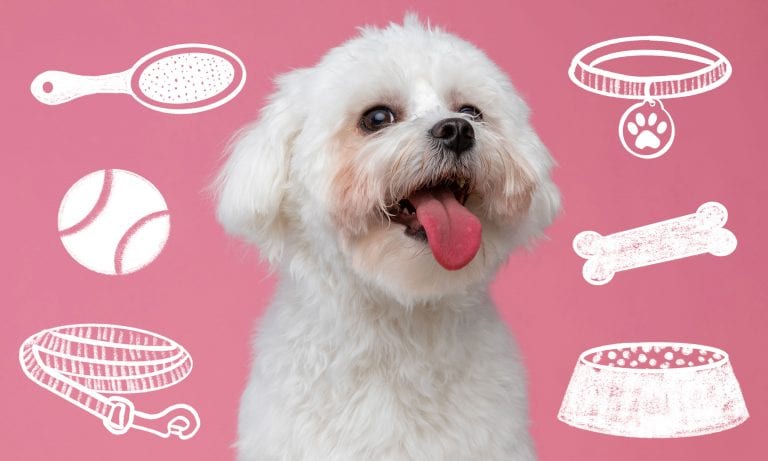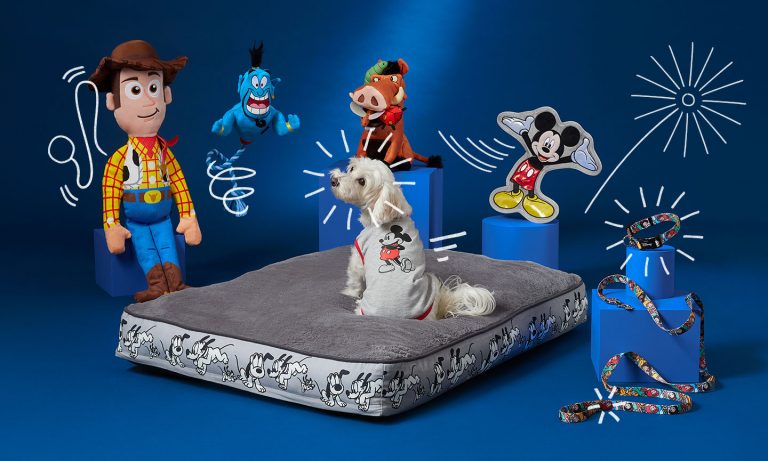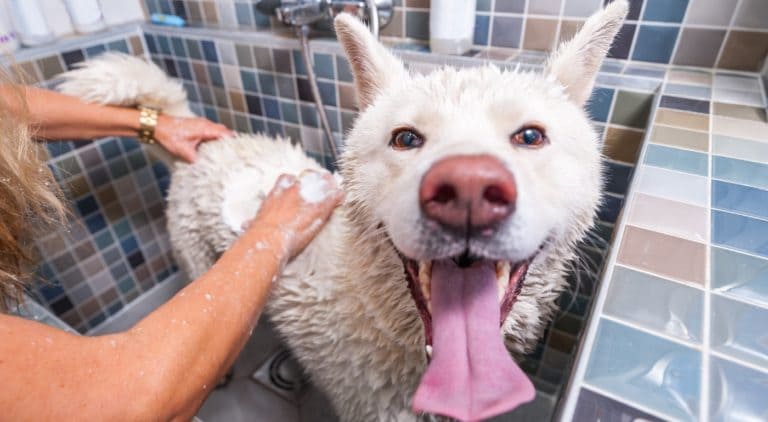Suiting up for a walk with your dog might seem like a no-brainer – all you need is a dog, leash and collar, right? – but there are a few more essentials that can help make your walks safe, comfortable and productive. Here are ten things you need to take your leash walks to the next level.
A Properly-Fitted Collar with ID

You’ve got a million options when it comes to picking a stylish collar for your dog, but the most important collar features are comfort and safety. The collar should fit so that you can get two fingers under it, meaning it’s not so loose that it will slip over your dog’s head but it’s not so tight that it’s uncomfortable. Make sure that your dog’s collar has a strong clasp or buckle that won’t pop open with pressure. Check that your dog’s ID tag is visible and more importantly, that the information on it is current and legible. Many tags wear down over time, making your contact information difficult to read. Collars that choke, pinch or shock are outdated and unnecessary tools and do more harm than good. There’s no need to train with pain.
A Fixed-Length Leash
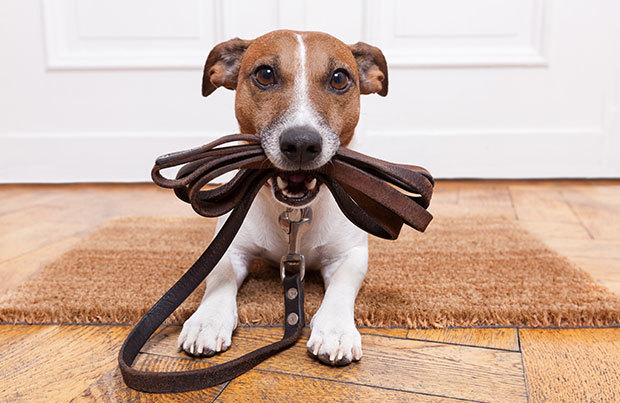
Although it’s tempting to walk your dog on the longest leash available, using an extendible leash can lead to problems. From a training perspective, flexible leashes encourage pulling because the dog always feels tension around his neck, which translates to “a tight leash means I get to go forward” mentality (and dogs should always walk on a loose leash). Plus, you and your dog aren’t really connected when he’s walking 15 feet in front of you – there’s no communication between dog and handler when there’s that much distance between them.
Extendable leashes also come with numerous safety concerns: the thin line can snap, the locking mechanism can jam and the leash can cause rope burns and other injuries to both dog and human. A fixed-length leash between four and six feet is more than enough room to roam, plus it’s safer for everyone.
Waste Bags

Poop bags are as essential to a walk as a leash and collar. Cleaning up after your dog is the neighborly thing to do, but more importantly, curbing your dog prevents the spread of disease. It’s easy to shove a few bags in your pocket when you head out the door, so don’t forget this critical part of leash walking equipment.
Treats

It takes time to instill leash manners, so why not make sure that your dog maintains his polite behavior by rewarding him with a treat every so often while you walk? If you’ve done the groundwork, there are a million opportunities during a typical walk to let your dog know that he’s doing a good job, and a well-timed reward will encourage him to keep up the good work. Opt for small soft, meaty treats that your dog only gets during walks so that they remain extra special.
Water and Water Bowl

If you’re planning a long trail hike with your pooch, you should pack water and a bowl. Your dog needs to stay hydrated when he’s exploring at a brisk pace, and since he can’t ask for a drink, it’s up to you to monitor his need for water. There are many hike-friendly options available, from water bottles that double as bowls to small silicone bowls that collapse into a portable pocket size. Some even allow for hygienic sharing between dog and pet parent!
Long Line Leash

A fixed-length leash is a must for walks in public spaces, but if you’re off-roading with your dog, consider a long line leash (which isn’t the same as extendible leashes – they’re longer fixed-length leashes typically made of cotton or nylon). These leashes give your dog the feeling of freedom and allow him to explore without having to drag you along. Long leashes can range anywhere from 10 to 30 feet, but keep in mind that the longer the leash, the better the handler needs to be at puppeteering as the extra length can be unwieldy.
Long leashes shouldn’t allow for canine lawlessness, though. Good manners still apply, like walking politely, coming back when called and avoiding rushing up to unfamiliar dogs and people.
Toys

If you’ve got a toy-crazy dog, consider using a special toy as a reward during walks. Many dogs enjoy carrying a toy during their walks, so something you can keep in your pocket, like a tennis ball on a string, is a great option as a reward. Use the toy the same way you might use a treat by bringing it out when your dog has performed a long stretch of polite walking and play tug with it as you walk along.
No-Pull Harness
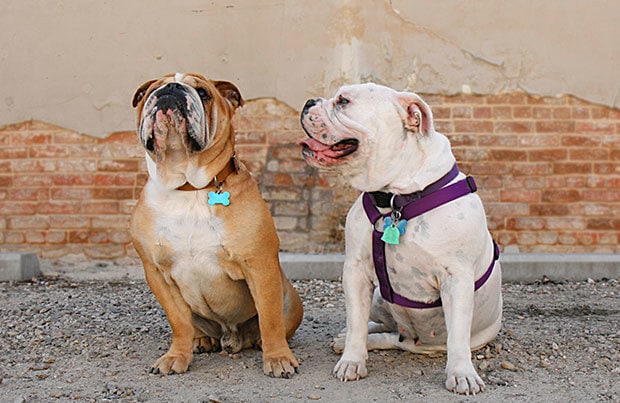
Training a dedicated leash-puller to walk politely can be frustrating, so a quick way to prevent the habit from cementing is using a dog-friendly, no-pull harness. These harnesses gently prevent pulling by changing the fulcrum point of the leash and can turn uncomfortable tug-of-war walks into manageable strolls in an instant.
Illuminated or Reflective Collar

Strolling at night? Keep your dog safe by making him visible with an illuminated collar or dog harness. Options include battery-operated pendant lights that dangle from your dog’s collar, battery-operated light up collars or rechargeable LED leashes and collars. The goal is to make your dog visible from a distance, so make sure to test the strength of the light emitted.
Inclement Weather Gear

Few of us enjoy walks in bad weather (including rain, snow and wind), and many of our dogs agree. Suiting your dog in appropriate gear, whether a rain slicker, warm coat or boots, can help keep him comfortable in ugly weather and make facing the storm a little more tolerable. That said, not every dog wants or needs to get dressed. The rule of thumb: small dogs, lean dogs, senior dogs with health issues and dogs with thin fur are less able to regulate their temperature in bad weather and can probably benefit from an extra layer.

Victoria Schade is a dog trainer, author & speaker who has contributed to The Washington Post, Martha Stewart, and other publications.
Share:
